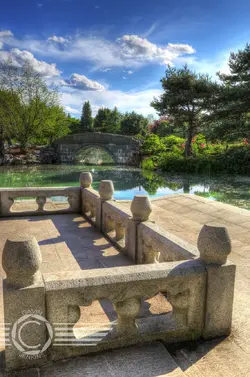First of all, there's no reason why you can't do HDR hand held. For example, my camera has a shutter speed of 4.5 frames per second or something like that, meaning that as long as I have good lighting (small fractions of a second shutter speeds), I can do a 3 shot bracket in about 2/3 of a second. As long as you have decent HDR software, it will align the images for you in post processing, fixing any very slight movement of the camera in between shots (I have photomatix which does this. It cost like $30 or something with a student license). If you use a decent post processing program, you also don't need in-camera HDR.
Secondly, HDR only solves
one type of problem: not having a big enough range between your shadows and your highlights. As in, if you have adjusted your camera for the best possible normal exposure, and your photo still has blown out highlights or black shadows, then HDR can help you. If not, it is useless and unneeded. Even if you want that "overcooked" HDR stylistic look, you still don't need multiple exposures if your camera already is able to capture the entire range. You can simply tonemap your one sufficiently exposed image instead (HDR software usually also has this option). It's literally
only for that one situation of not being able to expose shadows and highlights to your satisfaction in a normal shot.
So if anything other than that is wrong with your image (bad composition, bad quality or direction of light rather than just exposure, bad color, etc.), HDR will not help you make it a better image.
Thirdly, HDR is not the only way to solve the problem of blown out highlights or black shadows that you can't fix with basic exposure in camera. The other major (and often quicker and more popular) way to solve these issues is by manipulating the light yourself in the field. I.e. using flash, reflectors, altering available light in other ways, moving the subject so that the light falls differently on it/them, changing your angle, changing the time of day you shoot, etc. Skilled manipulation of the light will usually give better results than HDR, because by manipulating the light, you can create natural "sculpting" of your subject that creates new shapes and 3-dimensional interest. HDR, on the other hand, by its very nature, makes images overall flatter and more gray (that's the whole point of HDR).
It will preserve detail, but not make the light more interesting. To do the latter masterfully, I'm afraid you'll have to put in the time and effort to learn all the rest of the tricks of the trade of photography as well.
Edit: This is an example of a completely
HAND HELD hdr shot I took a couple of weeks ago (at the Montreal botanic gardens) and then processed in Photomatix:

^As you can see, there is not really any ghosting or mismatch from the camera slightly moving in between, because the software re-matched it up. Also, this photograph still completely relies on things like basic compositional awareness, etc. and I could have gotten the same stylistic look with just one exposure. All HDR did for me here was to let me show detail in the bright sky (the blues and the cloud shapes) while still also not having totally black shadows from the fence in the foreground.
Also, I could have accomplished those same things by using a fill flash to mute the shadows a bit in the front (I had a friend who could have held the flash opposite the sun to neutralize them), and/or by using a graduated neutral density filter to darken the sky, and/or by using a polarizing filter to make the clouds and blues pop more with a higher exposure overall. This just seemed like the easiest thing to do that would get results in that situation.















